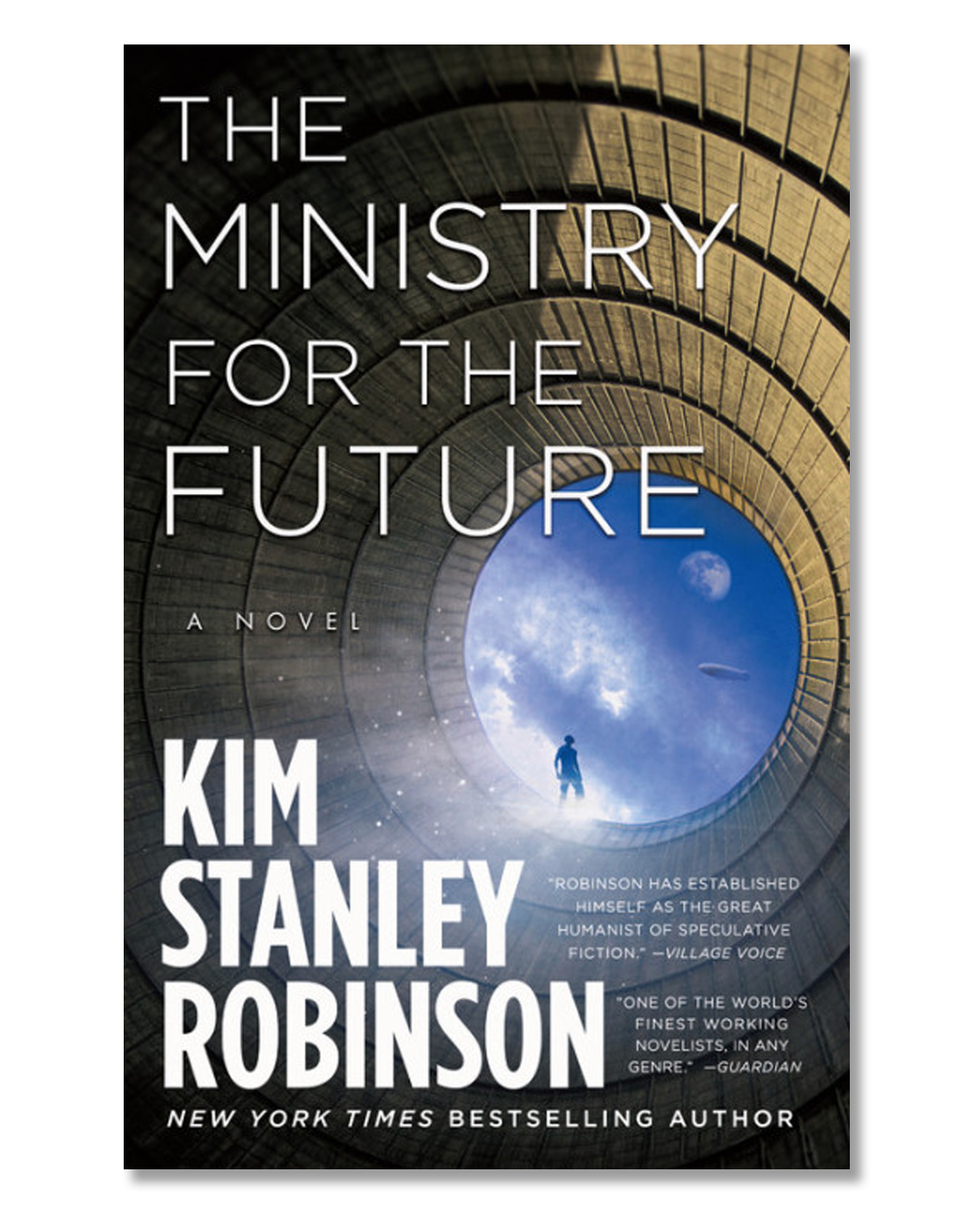Bill Gates and the problem with climate solutionism
In his new book, How to Avoid a Climate Disaster, Bill Gates takes a technology-centered approach to understanding the climate crisis. Gates begins with the 51 billion tons of greenhouse gases that people create every year. He slices this pollution into sectors by the size of their footprints—working his way from electricity, manufacturing, and agriculture to transportation and buildings. Throughout, Gates is adept at cutting through the complexity of the climate challenge, giving the reader handy heuristics to distinguish between the bigger technological problems (cement) and the smaller ones (airplanes).
At the Paris climate negotiations in 2015, Gates and several dozen other wealthy people launched Breakthrough Energy, an interlinked venture capital fund, lobbying group, and research effort. Gates and his fellow investors argued that both the federal government and the private sector are underinvesting in energy innovation. Breakthrough aims to fill some of this gap, funding everything from next-generation nuclear technology to fake meat that tastes more like beef. The venture fund’s $1 billion first round has had some early successes, like Impossible Foods, a maker of plant-based burgers. The fund announced a second round of equal size in January.

A parallel effort, an international pact called Mission Innovation, says it has persuaded its members (the executive branch of the European Union along with 24 countries including China, the US, India, and Brazil) to commit an additional $4.6 billion every year since 2015 to clean-energy research and development.
These various endeavors are the through line for Gates’s latest book, written from a techno-optimist’s perspective. “Everything I’ve learned about climate and technology makes me optimistic … if we act fast enough, [we can] avoid a climate catastrophe,” he writes in the opening pages.
As many others have pointed out, a lot of the necessary technology already exists; much can be done now. Though Gates doesn’t dispute this, his book focuses on the technological challenges that he believes must still be overcome to achieve greater decarbonization. He spends less time on the political obstacles, writing that he thinks “more like an engineer than a political scientist.” Yet politics, in all its messiness, is the key barrier to progress on climate change. And engineers ought to understand how complex systems can have feedback loops that go awry.
Yes, minister
Kim Stanley Robinson does think like a political scientist. The beginning of his latest novel, The Ministry for the Future, is set just a few years from now, in 2025, when a massive heat wave hits India, killing millions. The book’s protagonist, Mary Murphy, runs a UN agency tasked with representing the interests of future generations and trying to align the world’s governments behind a climate solution. Throughout, the book puts intergenerational equity and various forms of distributive politics at its center.

If you’ve ever seen the scenarios the Intergovernmental Panel on Climate Change develops for the future, Robinson’s book will feel familiar. His story asks about the politics necessary to solve the climate crisis, and he has certainly done his homework. Though it is an exercise in imagination, there are moments when the novel feels more like a graduate seminar in the social sciences than a work of escapist fiction. The climate refugees who are central to the story illustrate the way pollution’s consequences hit the global poor the hardest. But wealthy people emit far more carbon.
Reading Gates next to Robinson underlines the inextricable link between inequality and climate change. Gates’s efforts on climate are laudable. But when he tells us that the combined wealth of the people backing his venture fund is $170 billion, we may be puzzled that they have dedicated only $2 billion to climate solutions—less than 2% of their assets. This fact alone is an argument for wealth taxes: the climate crisis demands government action. It cannot be left to the whims of billionaires.
As billionaires go, Gates is arguably one of the good ones. He chronicles how he uses his wealth to help the poor and the planet. The irony of his writing a book on climate change when he flies in a private jet and owns a 66,000-square-foot mansion is not lost on the reader—nor on Gates, who calls himself an “imperfect messenger on climate change.” Still, he is unquestionably an ally to the climate movement.
But by focusing on technological innovation, Gates underplays the material fossil-fuel interests obstructing progress. Climate-change denial is strangely not mentioned in the book. Throwing up his hands at political polarization, Gates never makes the connection to his fellow billionaires Charles and David Koch, who made their fortune in petrochemicals and have played a key role in manufacturing denial.
For example, Gates marvels that for the vast majority of Americans, electric heaters are actually cheaper than continuing to use fossil gas. He presents people’s failure to adopt these cost-saving, climate-friendly options as a puzzle. It isn’t. As journalists Rebecca Leber and Sammy Roth have reported in Mother Jones and the Los Angeles Times, the gas industry is funding front groups and marketing campaigns to oppose electrification and keep people hooked on fossil fuels.
These forces of opposition are more clearly seen in Robinson’s novel than in Gates’s nonfiction. Gates would have done well to draw on the work that Naomi Oreskes, Eric Conway, and Geoffrey Supran—among others—have done to document the persistent efforts of fossil-fuel companies to sow public doubt on climate science. (I also tackled this subject in my own book, Short Circuiting Policy, which explains how fossil-fuel companies and electric utilities have resisted clean-energy laws in a number of American states.)
One thing Gates and Robinson do have in common, though, is the view that geoengineering—massive interventions to treat the symptoms rather than the causes of climate change—may be inevitable. In The Ministry for the Future, solar geoengineering, or spraying fine particles into the atmosphere to reflect more of the sun’s heat back into space, is used after the deadly heat wave with which the novel opens. And later, some scientists take to the poles and devise elaborate methods for removing melted water from underneath glaciers to prevent it from flowing into the sea. Despite some setbacks, they hold back sea-level rise by several feet. We might imagine Gates showing up in the novel as an early financial backer of these efforts. As he notes in his own book, he has been funding solar geoengineering research for years.
The Thick of It

The title for Elizabeth Kolbert’s new book, Under a White Sky, is a reference to this nascent technology, since implementing it on a large scale could turn the sky from blue to white.
Kolbert notes that the first report on climate change landed on President Lyndon Johnson’s desk way back in 1965. This report did not argue that we should cut carbon emissions by moving away from fossil fuels. It advocated changing the climate through solar geoengineering instead, though that term had not yet been invented. It is disturbing that some would jump immediately to such risky solutions rather than addressing the root causes of climate change.
In reading Under a White Sky, we are reminded of the ways that interventions like this could go wrong. For example, the scientist and writer Rachel Carson advocated importing nonnative species as an alternative to using pesticides. The year after her 1962 book Silent Spring was published,
the US Fish and Wildlife Service brought Asian carp to America for the first time, to control aquatic weeds. The approach solved one problem but created another: the spread of this invasive species threatened local ones and caused environmental damage.
As Kolbert puts it, her book is about “people trying to solve problems created by people trying to solve problems.” Her reporting covers examples including the ill-fated efforts to stop the spread of Asian carp, the pumping stations in New Orleans that accelerate that city’s sinking, and attempts to selectively breed coral so that it can withstand hotter temperatures and ocean acidification. Kolbert has a keen awareness of unintended consequences, and she’s funny. If you like your apocalit with a side of humor, she will have you laughing while Rome burns.
By contrast, though Gates is aware of the potential pitfalls of technological solutions, he still praises plastics and fertilizers as life-giving inventions. Tell that to the sea turtles swallowing plastic garbage, or the fertilizer-driven algal blooms destroying the ecosystem in the Gulf of Mexico.
With dangerous levels of carbon dioxide in the atmosphere, geoengineering might indeed prove necessary, but we shouldn’t be naïve about the risks. Gates’s book has many good ideas and is worth reading. But for a fuller picture of the crises we face, make sure to read Robinson and Kolbert too.

